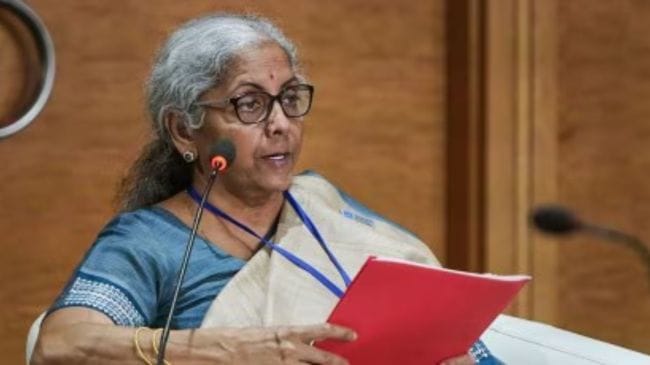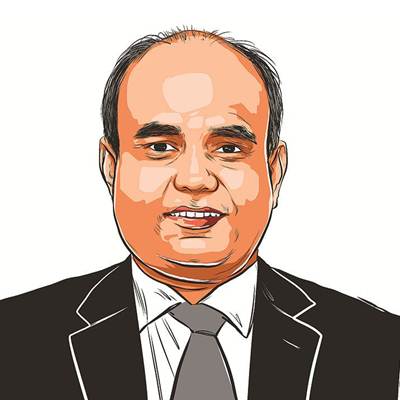Opinion GST 2.0: The arc from 2017 to 2025 is not a U-turn; it is a straight line
Turning a good tax into a better one, and a single market into a stronger engine. That is the Modi method: Design for India as it is, deliver for India as it aspires to be
 GST 2.0 puts money back in the household wallet via lower rates on a broad set of mass-consumption goods and services while keeping “sin” goods in higher brackets.
GST 2.0 puts money back in the household wallet via lower rates on a broad set of mass-consumption goods and services while keeping “sin” goods in higher brackets. Here’s the simple truth: The Goods and Services Tax (GST) was the right reform in 2017, and a smarter reform in 2025.
On September 3, the GST Council approved a transformative rationalisation collapsing the earlier multi-tiered GST structure into two principal slabs, 5 per cent and 18 per cent, with a higher levy reserved for “sin” goods. Rates on a wide basket of everyday items have been pared, compliance has been eased, and the signal is unmistakable: India is moving from design to delivery, from a tax that unified the market to a tax that will now power consumption and formalisation in tandem.
To appreciate why this is consequential, we must trace the arc. In July 2017, India did something few complex federations have successfully dared: Folding scores of central and state levies (excise, service tax, VAT, octroi and more) into a destination-based GST administered cooperatively by Centre and the states. It was the only workable design for a vast, diverse economy: A dual GST with a council that decided by consensus. Critics called it messy; in truth, it was pragmatic statecraft. You do not build a single market in India by diktat; you stitch it together, layer by layer, with respect for federalism and consensus building.
Those early years asked for patience. Multiple slabs were not a bug, but a feature; a stabiliser for a country where a single tax on milk and the Mercedes would have been catastrophic. In a country with the levels of income India had in 2017 (and 2025) along with the income disparity, we could not have had a regressive structure. The reason is simple. Poorer households spend a higher proportion of their income on consumption and their goods need to be taxed at a lower rate. Those who argued that we advocated for one rate in 2017 itself simply do not understand how it would have devastated the poor. While one rate of 12 or 18 per cent or whatever may have been simpler to administer and beautiful to advertise, it would expand poverty rather than eliminate it. Alternatively, if everything was taxed at 5 per cent or less what would happen to the revenues of the various governments? Thus, we saw the multiplicity of rates (from very low taxes for essentials to higher taxes for sin goods) in the formative years.
There is one more reason for how GST 1.0 was designed in 2017 and why that was the only way. In 2017, we needed buy-in from states with different revenue structures to keep inflation in check. A staggered design was the political economy tax we paid to build trust. Today, with the council’s institutional capacity matured and data visibility vastly improved, the system can bear simplification without fiscal panic. That is the essence of good governance: Sequence wisely and pace reforms to capacity.
Once the states and the Centre came together with shared sovereignty in 2017, the council did not rest between 2017 and 2025 but frequently recalibrated rates, ironed out teething troubles, and built the plumbing: E-way bills to curb evasion, e-invoicing rolled out in phases (now mandatory for businesses with turnover above Rs 5 crore), and analytics to spot fraud. Over time, GST stopped being an event and became a habit. Collections tell the story: A record Rs 2.10 lakh crore in April 2024, and an even higher Rs 2.37 lakh crore in April 2025 — evidence of deepening compliance and an expanding formal base.
Having built that stability, the Modi government has chosen the right moment to simplify. Rate rationalisation now minimises disruption and maximises impact. The two-slab regime, with targeted higher levies reserved for sin goods, trims compliance costs for millions of firms, clarifies pricing for consumers, and frees administrative bandwidth from wrangling over micro-classifications to focusing on big-ticket enforcement.
Reform is not an isolated headline; It is a pattern. The Modi years have been, at their core, an exercise in the art of implementation. Designing at scale, delivering at speed, and iterating with humility. Insolvency reforms cleaned up a credit culture long dulled by evergreening; UPI rewrote payments architecture and brought the kirana into the digital mainstream; supply-side pushes like Gati Shakti and PLI reduced the friction cost of doing business. GST 1.0, similarly, ensured “ease of doing business” by converting India into one seamless market.
What does GST 2.0 now actually do for the citizens and the small firms? First, it puts money back in the household wallet via lower rates on a broad set of mass-consumption goods and services while keeping “sin” goods in higher brackets. Second, it simplifies the administrative logjam: Two slabs mean fewer disputes at the invoice line, faster audits, and less working capital trapped in classification fights. Third, it pushes even greater formalisation and in turn tax buoyancy; compliance becomes the path of least resistance rather than a bureaucratic maze. Fourth, it encourages entrepreneurship by reducing compliance costs for new entrants.
Zoom out and the picture is clearer still. Over the last decade, India has climbed into the world’s top four economies with infrastructure growth, expanding financial inclusion, and digitising public services as a matter of routine. But growth stories endure only when they simplify life for the many, not the few. That is what this GST reform does. It rewards honest business, respects the consumer, and treats compliance as a service, not a threat.
The arc from 2017 to 2025 is not a U-turn; it is a straight line. We began with the only feasible structure for a complex federation. We stabilised through steady, often quiet improvements. And now, we are reforming at the optimum moment. Turning a good tax into a better one, and a single market into a stronger engine. That is the Modi method: Design for India as it is, deliver for India as it aspires to be.
The writer is CEO, Bluekraft Digital Foundation and was earlier director (content), MyGov






